Written by Zuzana Prochazka for Yacht Style Magazine.
Photos by Dufour Yachts.
Sometimes big things come in small packages as shown by the voluminous Dufour 37, with the French builder’s popular new model securing multiple sales in Asia.
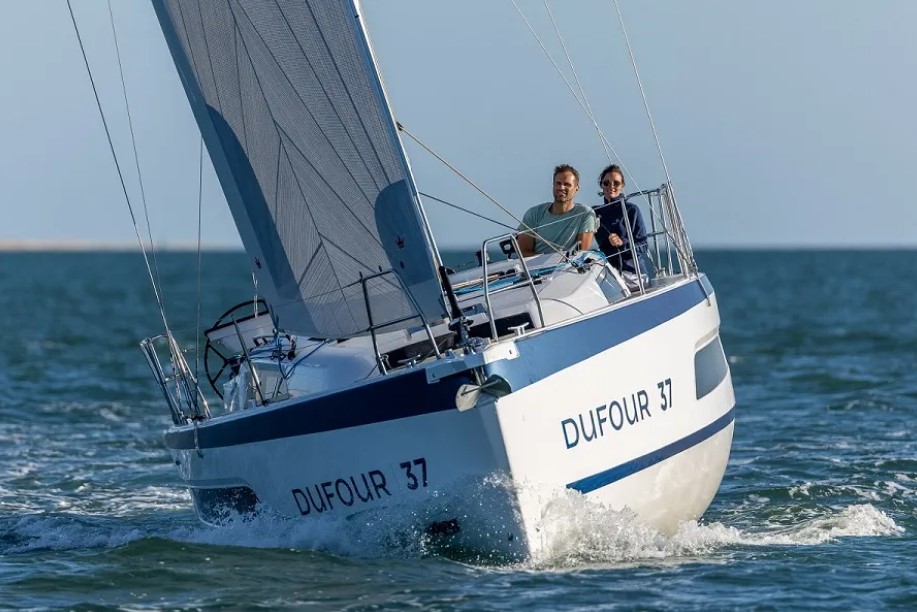
Historically, cruising sailboats have been evaluated on two basic aspects – comfort and performance. If the builder dials in just one of these, the new model will likely sell well, but when they nail both, the sales orders really fly. That seems to be the case with Dufour and its new 37, a small boat with a big attitude that serves up fast sailing as well as easy onboard living.
When counting the Dufour 41 that premieres at this year’s Cannes Yachting Festival, the La Rochelle shipyard now has nine models in a series spanning 32-61ft, with the Dufour 37 sliding in above the brand’s 32ft entry model.
ALL-NEW DESIGN
Weighing in at close to seven tonnes, the 37 replaces the previous 360 with a completely new hull that’s just 33ft long, although including the bow sprit gives an overall length of 35ft 4in. Rounding up LOA numbers isn’t a new strategy for Dufour, but there are features that make this compact design seem much larger than her specs suggest.
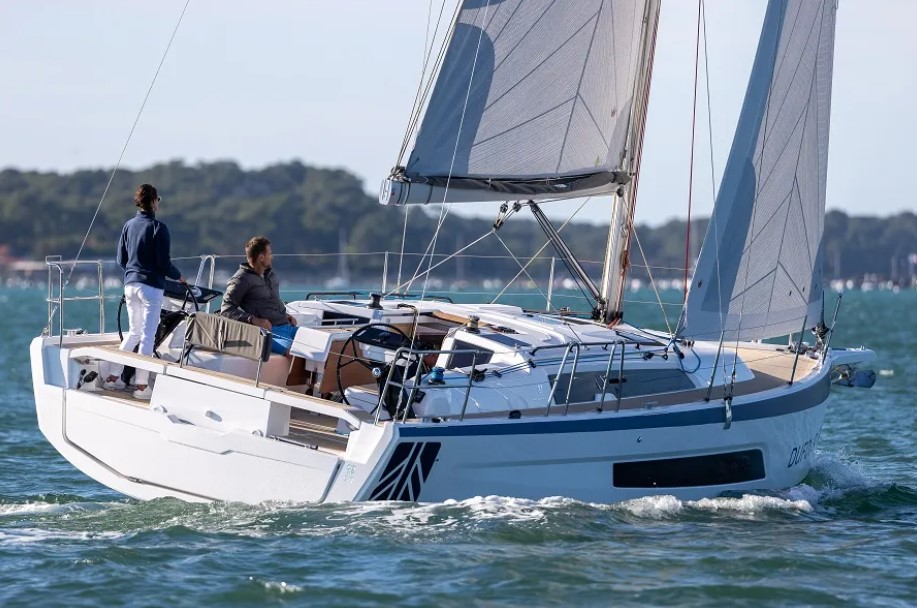
Offered with two or three cabins, the Dufour 37 is beamier than the previous 360 and carries that width nearly all the way to the transom, which drops down manually to form a small swim platform.
Fuller sections forward increase her buoyancy as well as her interior volume. For improved performance, the forefoot has been made deeper to reduce pounding into head seas. The fractional Z-Spar rig was moved aft a foot to increase the size of the fore triangle and the headsail, also to reduce hobby-horsing.
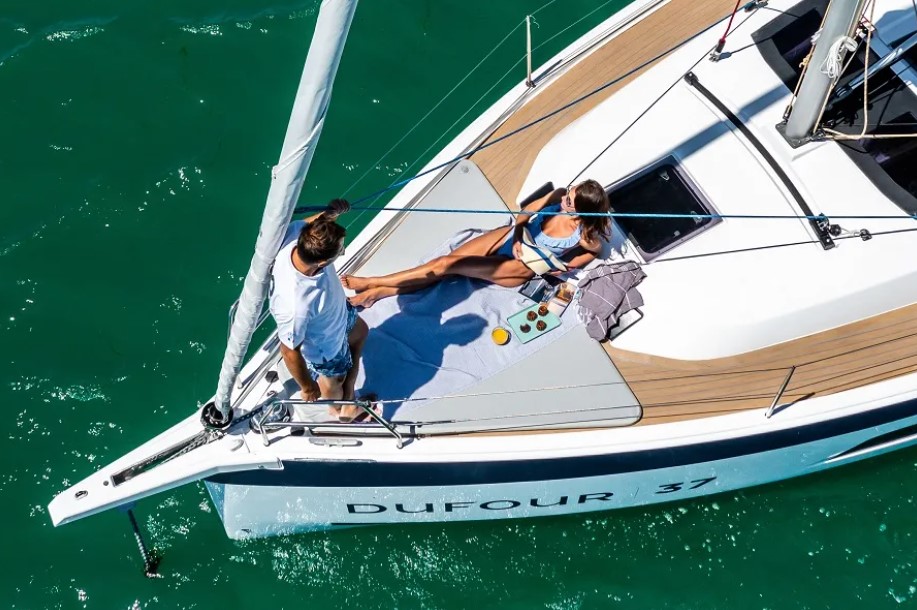
The rig is also taller than her predecessor’s, with a higher aspect ratio and an additional 20sqft of sail area. A self-tacking jib is standard, but you can opt for a 108% overlapping headsail and tracks. When the jib is combined with the optional downwind screecher on a furler, you have just about the perfect sail plan for any wind direction and sea state.
Twin wheels on angled pedestals open the cockpit and command a single spade rudder, as is standard for Umberto Felci designs. Below the waterline is a 6ft 3in L-shaped fin keel with a bulb. That’s relatively deep for a boat of this size and it helps her point well.
PERFORMANCE
In our sea trial, hull two performed well on flat water in 9-12 knots of true breeze. In nine knots of wind, we sailed 6.5 knots on a beam reach, then inched up to 35 degrees apparent wind angle (AWA) where we still held on to 6.2 knots of speed.
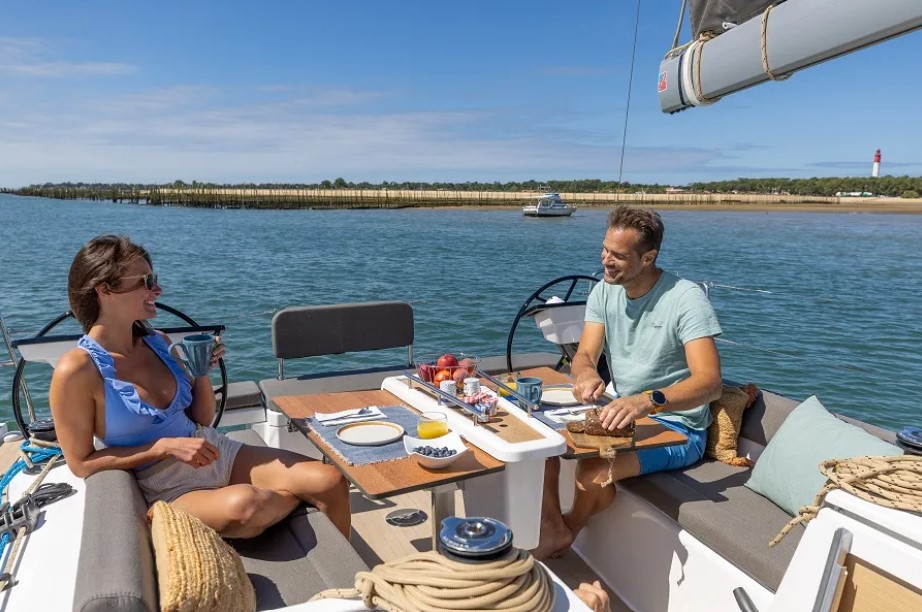
The self-tacking jib makes it almost too easy, even when sailing short-handed, while the top/down gennaker gave us a boost in speed that we carried up to 70 degrees AWA.
In light gusts we stayed fairly upright, as the boat leaned on her hard chine to a maximum of only 18 degrees of heel. The helm was light and responsive, and we had to take care not to over-tack and leave S-turns in our wake.
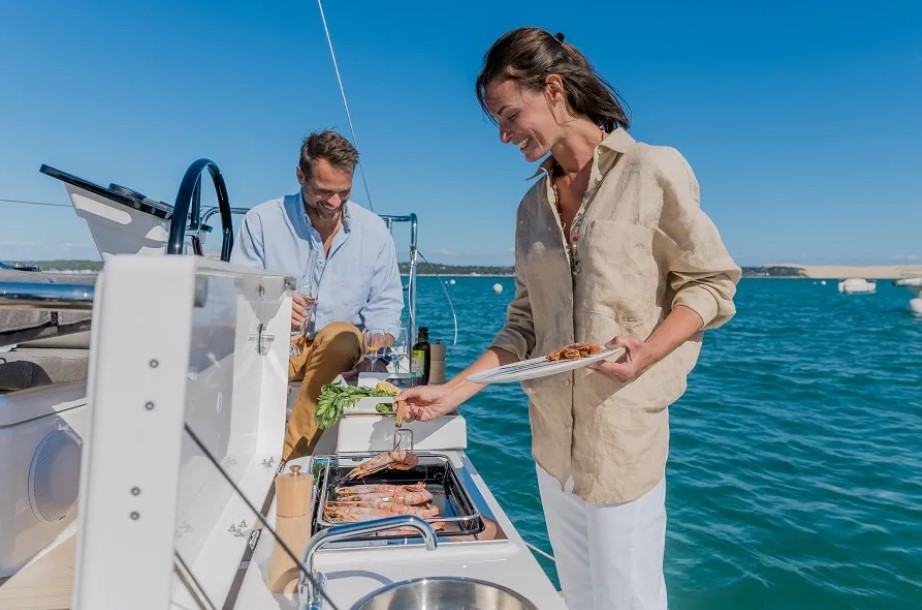
We came away from the sea trial pleasantly surprised by this little speedster. She tracked well, made good progress even in a light breeze, and although quick and agile, she never felt out-of-control or tender and that helps build confidence in all who take her helm.
ONBOARD COMFORT
As mentioned, this is a yacht that nails both performance and comfort. The cockpit is massive for a boat in this class, with a generous folding table and good handholds. Dufour’s trademark Eno plancha grill and sink have been incorporated into the transom to mimic her bigger siblings. There’s even space in the bow for a fitted double sunpad.
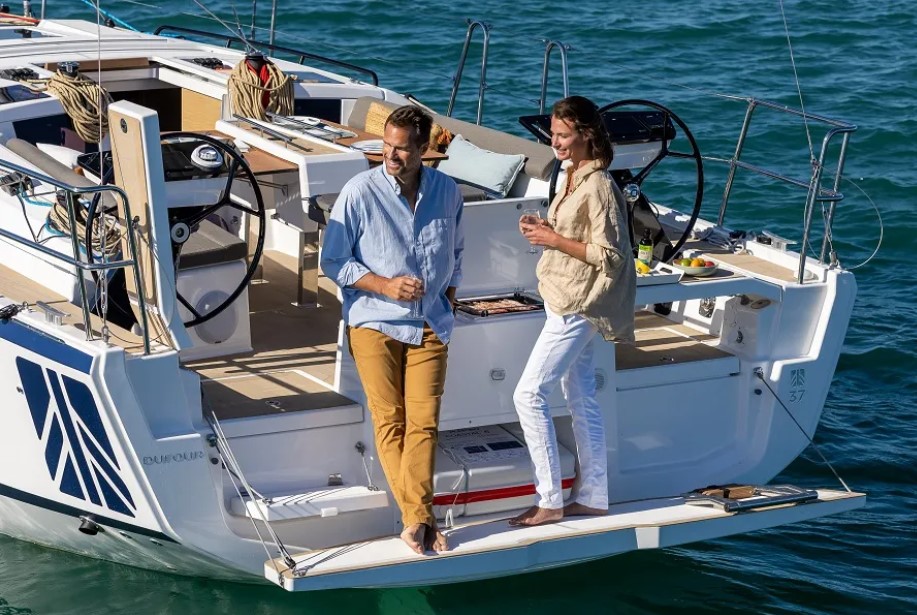
Below deck, the boat looks deceptively long and wide, and that makes a great first impression from the foot of the companionway. A compact L-shaped galley is to port and has a double sink, two-burner stove, microwave and top loading refrigerator. Integrated wine bottle storage, a Dufour signature, is below the cabin sole as usual.
There’s one bathroom, to starboard, although its size and configuration depend on whether two or three cabins are chosen.

Four people can gather for a meal around the enormous drop-leaf dining table and an inflatable cushion may be tucked in at the settee to form an additional double berth. Light wood finishes and fabrics make the interior seem bright and inviting rather than buried in the hull and cramped.
You can really see the increased volume in the forward master stateroom, where two can now sleep with their heads forward instead of having to U-turn in the bed before tucking in for the night. The three-cabin layout has two aft guest cabins with aft-facing double beds.
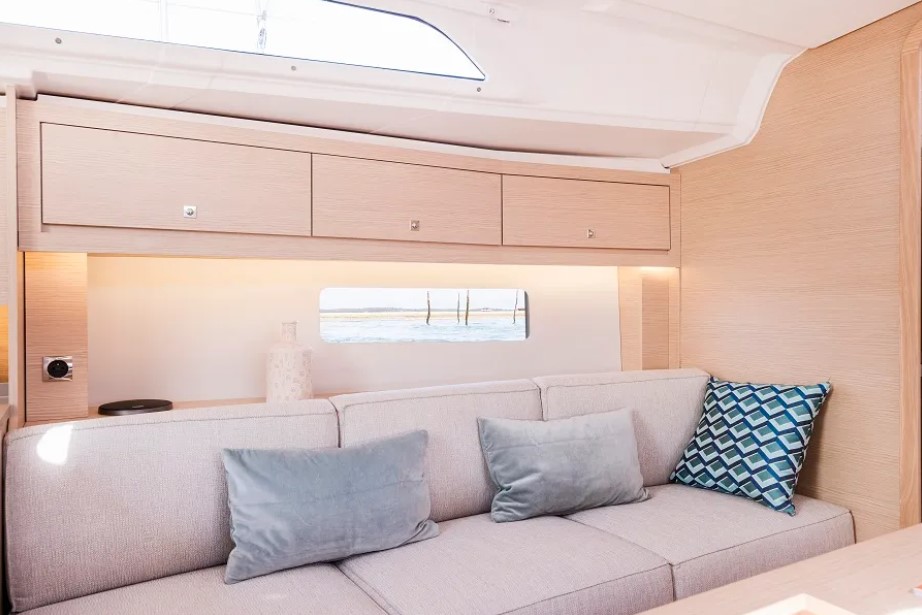
With the two-cabin layout, the aft guest cabin to port has a large inward-facing bed, while there’s space for provisions, tools and luggage in the aft starboard corner, a room also accessible via the opening cockpit bench above. Another benefit of the two-cabin layout is that the head becomes larger and a small navigation desk is added to the aft end of the saloon’s starboard sofa.
OPTIONS & IMPRESSIONS
The Dufour 37 is available in three versions or ‘˜packs’. The basics in the Easy Pack are a good starting point, but you may want to step up to the Ocean version for a more traditional layout or Performance for racing, where you get extra equipment like additional winches for easier line handling and an adjustable backstay.
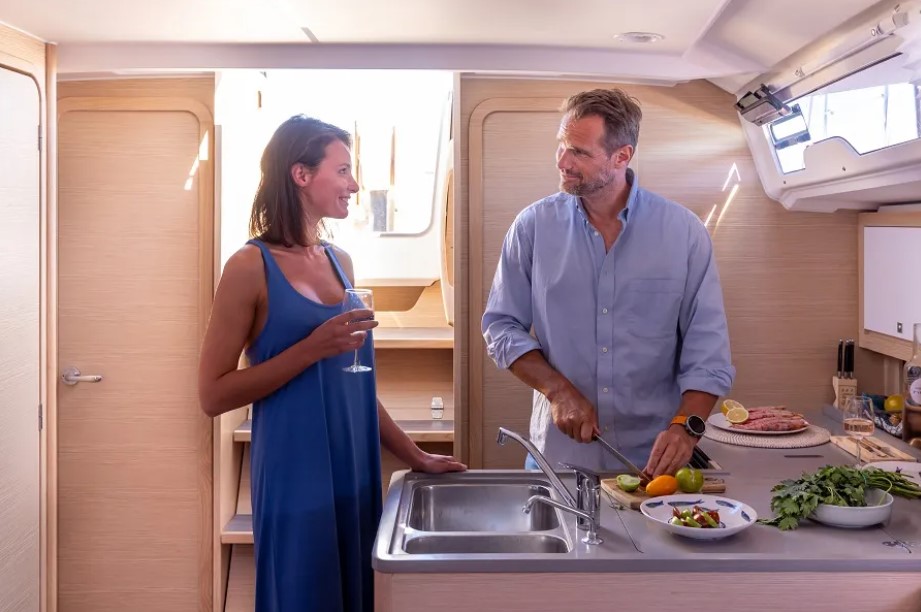
Standard propulsion is provided by an 18hp engine, although on our test boat we enjoyed the extra power of the upgraded 30hp Volvo Penta diesel that pushed us along easily at 6.5 knots at 2,100 rpm.
We topped out at 7.8 knots and 3,100 rpm, but that last knot is hard-won and guzzles diesel without great payback. An optional Side-Power bow thruster is available and can help new boaters really stick the landing.
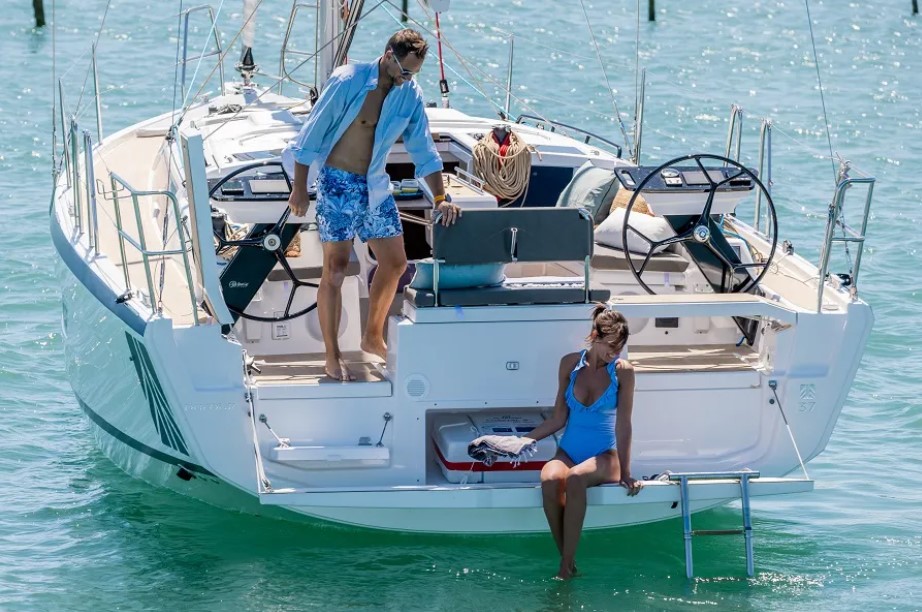
The Dufour 37 delivers greater comfort, more usable space and better sailing performance than her predecessor. As far as ‘˜improvement over time’ is concerned, Dufour got it right.
